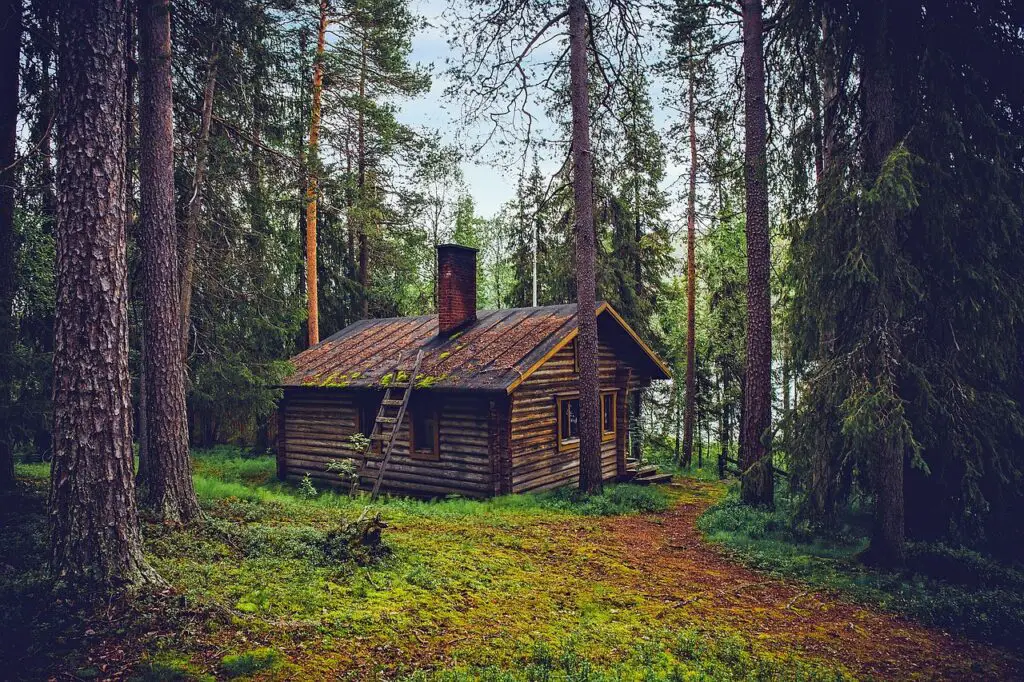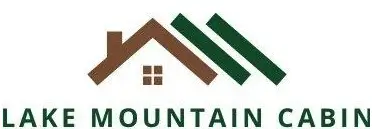Purchasing a log cabin vacation home is an exciting and important decision. It’s a place where you can escape the hustle and bustle of everyday life, create lasting memories with family and friends, and enjoy the tranquility and beauty of nature.
To help you navigate the process and make a well-informed decision, I’ve created this comprehensive guide to the questions you need to ask before you move forward.
The point is to provide you with essential questions to consider as you embark on your journey to find the perfect log cabin. From understanding the different types of log construction to assessing the cabin’s location and potential rental income, these questions cover it all.
I get it — it can be overwhelming to sift through countless properties and consider various factors. But asking the right questions will not only save you time and effort but also ensure that you find a log cabin that truly meets your needs and desires.
With these 50 crucial questions in hand, you’ll be well-prepared to find the perfect vacation log home for you and your loved ones.

1. What is the total cost of the log cabin, including taxes and fees?
The total cost includes the purchase price and any additional fees, which will help you determine the overall affordability of the cabin.
2. Are there any additional maintenance or homeowners’ association fees?
Maintenance or homeowners’ association fees could impact your budget and need to be factored in when considering the property.
3. Is the cabin located in a flood- or wildfire-prone area?
Cabins in flood- or wildfire-prone areas may require additional insurance coverage and pose potential safety hazards.
4. What is the history of the property, including previous owners and any significant repairs or renovations?
Knowing the property’s history will provide insight into its condition and help identify any potential issues or hidden costs.
5. What type of log construction was used to build the cabin (handcrafted or milled)?
The type of log construction used can impact the cabin’s appearance, durability, and maintenance requirements.
6. Are there any known issues with pests, such as termites or carpenter ants?
Pests can cause structural damage and require costly extermination, so it’s important to be aware of any issues before purchasing.
7. What is the energy efficiency rating of the cabin?
Energy efficiency affects utility costs and the cabin’s environmental impact, making it an important factor for many buyers.
8. How is the cabin insulated and what is its R-value?
Proper insulation can improve comfort, energy efficiency, and reduce heating and cooling costs.
9. What are the cabin’s heating and cooling options?
Heating and cooling options are essential for maintaining a comfortable temperature in the cabin throughout the year.
10. What type of foundation does the cabin have and is it in good condition?
A solid foundation is crucial for the cabin’s structural integrity and longevity.
11. Are there any visible signs of water damage, rot, or mold in the cabin?
Water damage, rot, or mold can lead to costly repairs and potential health issues, so identifying these problems is essential.
12. How old is the roof and what material is it made of?
Knowing the roof’s age and material can help you anticipate maintenance or replacement costs in the future.
13. Are there any warranties on the cabin’s materials or workmanship?
Warranties can provide peace of mind and protect against unexpected expenses related to materials or workmanship.
14. What is the quality and age of the cabin’s plumbing and electrical systems?
Up-to-date plumbing and electrical systems are crucial for safety and functionality.
15. Are there any known issues with the septic system or sewer connection?
Septic system or sewer connection issues can result in expensive repairs or health hazards.
16. What is the water source for the cabin (well, municipal, or other)?
The water source affects water quality, availability, and potential treatment requirements.
17. What are the average utility costs for the cabin?
Average utility costs can help you budget and determine the cabin’s overall affordability.
18. Are there any liens or encumbrances on the property?
Liens or encumbrances can complicate the purchase process and potentially affect your ownership rights.
19. What are the local property tax rates and assessments?
Property tax rates and assessments impact annual expenses and should be considered in your budget.
20. Is the cabin located within a protected or restricted area, such as a conservation easement?
Protected or restricted areas may limit your ability to make changes or additions to the property.
21. What are the zoning regulations for the property?
Zoning regulations govern how the property can be used and could affect your plans for the cabin.
22. Are there any restrictions on renting out the cabin as a vacation rental?
Renting out your cabin can generate income, but may be subject to restrictions in some areas.
23. What is the cabin’s proximity to nearby amenities, such as grocery stores, restaurants, and healthcare facilities?
Nearby amenities can impact convenience, property value, and overall enjoyment of the cabin.
24. How close is the cabin to outdoor recreational activities, such as hiking, fishing, or skiing?
Proximity to outdoor activities can enhance your cabin experience and potentially increase rental income.
25. Are there any nearby noise or pollution sources that could affect the cabin’s enjoyment?
Noise or pollution sources can negatively impact the cabin’s enjoyment and potentially affect property value.
26. What is the quality of the local school district if you have children or plan to in the future?
The quality of the local school district is important for families or for resale value in the future.
27. What are the local crime rates and safety statistics?
Crime rates and safety statistics can help you assess the overall security and desirability of the area.
28. How accessible is the cabin year-round, especially in winter months?
Year-round accessibility is important for personal use and rental potential, especially during winter months.
29. What are the cabin’s internet and cell phone service options?
Reliable internet and cell phone service is essential for communication, entertainment, and remote work.
30. Is there a local property management company available for maintenance and repairs?
A property management company can handle maintenance and repairs, making ownership more convenient, especially for out-of-town owners.
31. Are there any local regulations or ordinances that could impact the use of the cabin or property?
Local regulations or ordinances could impact your plans for the cabin or its use, so it’s important to be informed.
32. How does the cabin’s resale value compare to similar properties in the area?
Resale value comparisons can help you determine if the cabin is a good investment and ensure you’re paying a fair price.
33. What is the cabin’s proximity to emergency services, such as police, fire, and hospitals?
Proximity to emergency services can impact safety and response times in case of an emergency.
34. What are the neighbors like and what is the community atmosphere?
Friendly neighbors and a strong community atmosphere can enhance your cabin experience and increase overall satisfaction.
35. Does the cabin come furnished, and if so, what is the quality and condition of the furnishings?
The quality and condition of furnishings, if included, can impact the cabin’s move-in readiness and overall value.
36. Is the cabin easily accessible for guests or renters with mobility issues?
Accessibility features are important for accommodating guests or renters with mobility issues.
37. Are there any shared amenities or facilities within the community or nearby, such as a pool or clubhouse?
Shared amenities or facilities can enhance the cabin experience, but may come with additional fees or restrictions.
38. What is the average rental income for similar properties in the area, if you’re considering it as an investment?
Understanding average rental income for similar properties can help you assess the potential return on investment if you plan to rent out the cabin.
39. Are there any restrictions on future renovations or improvements to the cabin or property?
Restrictions on future renovations or improvements can impact your ability to customize the cabin to your preferences or increase its value.
40. Are there any environmental concerns or hazards in the area, such as radon or contaminated water sources?
Environmental concerns or hazards can affect the property’s safety, value, and desirability, making it important to be aware of any potential issues.
41. What is the quality of the cabin’s indoor air and ventilation systems?
Indoor air quality and ventilation systems play a crucial role in maintaining a healthy living environment and ensuring comfort.
42. Are there any easements or right-of-way agreements on the property?
Easements or right-of-way agreements may affect your ability to use or develop certain parts of the property.
43. How are garbage and recycling services handled in the area?
Proper garbage and recycling services are essential for maintaining a clean and environmentally responsible property.
44. Is there adequate parking and storage space for vehicles and outdoor equipment?
Adequate parking and storage space is important for accommodating vehicles and outdoor equipment, especially for larger families or groups of renters.
45. How well does the cabin hold its value in the local real estate market?
The cabin’s ability to hold its value in the local real estate market can help you assess its long-term investment potential.
46. Are there any planned developments or construction projects nearby?
Planned developments or construction projects nearby can impact the cabin’s property value, views, and overall enjoyment.
47. Are there any incentives or tax credits available for energy-efficient upgrades or improvements to the cabin?
Incentives or tax credits for energy-efficient upgrades can offset the cost of improvements and increase the cabin’s value and efficiency.
48. What type of insurance coverage will be required for the cabin and what are the estimated premiums?
Required insurance coverage and estimated premiums can impact your budget and overall affordability of the cabin.
49. Is the cabin part of a larger development, and if so, how do the management and community guidelines affect property ownership?
If the cabin is part of a larger development, understanding the management and community guidelines can help ensure a smooth ownership experience.
50. How long has the cabin been on the market, and have there been any significant price reductions or changes in the listing?
The length of time the cabin has been on the market and any significant price reductions can provide insight into the property’s desirability and help you negotiate a better deal.
